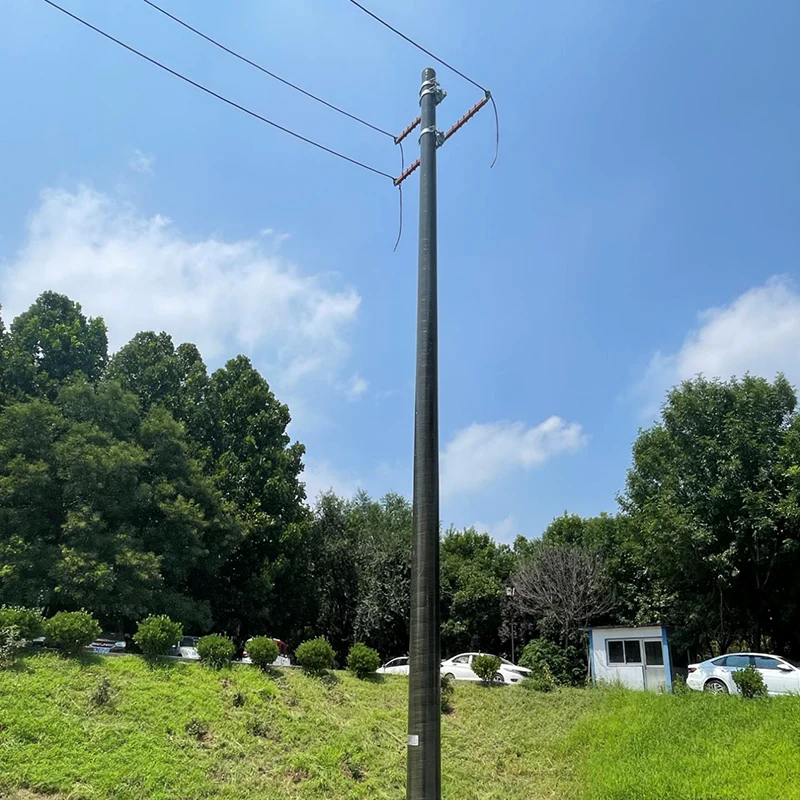Features of Composite Power Poles
2024-06-13
A composite power pole is a modern alternative to traditional wood, steel, or concrete utility poles used for electricity distribution and telecommunications. Made from composite materials such as fiberglass reinforced plastic (FRP), composite power poles offer several advantages over conventional poles in terms of durability, performance, and environmental impact. Here's an overview of composite power poles, including their features, benefits, applications, and considerations:
Features of Composite Power Poles
1. Material Composition: Typically constructed from layers of fiberglass strands embedded in a resin matrix, resulting in a lightweight yet strong pole.
2. Design Flexibility: Can be manufactured in various shapes, sizes, and configurations to meet specific utility requirements and load capacities.
3. Corrosion Resistance: Unlike wood and steel poles, composite materials do not rust or corrode, making them suitable for harsh environmental conditions and coastal areas.
4. Weight: Lighter than steel or concrete poles, easing transportation, installation, and handling during maintenance.
5. Dielectric Properties: Non-conductive nature of FRP reduces the risk of electrical hazards and improves safety for utility workers and the public.
Benefits of Composite Power Poles
1. Durability: Resistant to weathering, UV degradation, insects, and moisture, resulting in a longer service life compared to traditional materials.
2. Low Maintenance: Requires minimal maintenance and painting compared to wood and steel poles, reducing operational costs over time.
3. Environmental Impact: Manufactured from recyclable materials and have a lower carbon footprint compared to concrete and steel poles.
4. Installation: Easier and faster to install due to their lighter weight, potentially reducing labor costs and disruption to surrounding areas.
5. Safety: Non-conductive nature reduces electrical hazards, making them safer for handling and installation near power lines.
Applications of Composite Power Poles
1. Electricity Distribution: Used by utility companies for overhead power lines in residential, commercial, and industrial areas.
2. Telecommunications: Support infrastructure for antennas, cellular networks, fiber optic cables, and other communication equipment.
3. Railways: Provide support for overhead catenary systems used in electrified railway lines.
4. Military and Security: Deployed in remote or sensitive areas where durability, non-conductivity, and ease of installation are crucial.
Considerations
1. Initial Cost: While composite power poles may have higher upfront costs compared to wood, their long-term durability and reduced maintenance expenses often offset the initial investment.
2. Load Capacity: Ensure that the pole's design and specifications meet the required load-bearing capacity and environmental conditions for the intended application.
3. Regulatory Compliance: Verify compliance with local regulations, standards, and utility company requirements for materials and construction methods.
4. Supplier and Warranty: Choose a reputable manufacturer or supplier with a track record of quality products and provide a warranty for performance and durability.
Summary
Composite power poles offer a modern solution for electricity distribution and telecommunications infrastructure, combining durability, lightweight design, and environmental benefits. By leveraging the advantages of composite materials such as FRP, these poles contribute to safer, more efficient utility operations while reducing maintenance costs and environmental impact compared to traditional wood, steel, or concrete poles.



